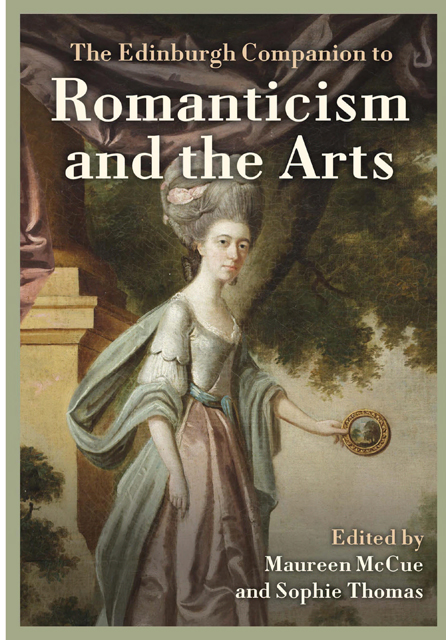23 - Album Culture: Begging for Scraps
Published online by Cambridge University Press: 25 April 2023
Summary
I begin with an unsigned print designed to be pasted into a manuscript album or scrapbook as the frontispiece which greeted readers and prospective contributors (fig. 23.1; Ackermann [1830–58]). A group of young women and girls offer their blank albums, beseeching the viewer to contribute. The image asserts the album’s interactive, social character: this is not a commonplace book, with content selected by the owner, but a communal work. It also defines album-keeping as a feminine practice and hints at an analogical relation between book and owner; the blank faces echo blank pages, and the tableau performs the owner’s verbal request as she proffers her book. Yet this simple message is complicated by the proscenium arch of visual scraps on comic and sentimental subjects. Ostensibly, this assists contributors by giving examples of content they might contribute. However, the Romantic album was primarily a vehicle for amateur arts, handicrafts, and cuttings from magazines and prints. This commercial lithograph functions also as an advertisement for the prints and scraps – and albums and scrapbooks – sold at Ackermann & Co’s London shop, the Repository of Arts at 96 Strand. It posits that the contributor who lacks the time, interest or talent to create a bespoke artwork can purchase an attractive printed alternative. The frontispiece represents the album as operating simultaneously in a gift economy and the marketplace, but supposes an inevitable progression from handmaking to purchasing mass-produced prints. The conflation of charitable giving with economic transactions, and ambivalence about album culture, are symbolised by a disconcerting figure in the foreground: a beggar-boy with peg leg and bandaged head waves his crutch to solicit our attention and extends his hat for donations. This visual pun announces that the girls are engaged in metaphorical beggary, while the unruly urchin satirises the young women at whom the frontispiece is marketed. The earnest album-keepers cannot see the pictures which subvert sentimental clichés of album iconography through broad jokes on courtship and marriage drawn from the tradition of caricature prints. The disruptive beggar-boy is both confirmatory symbol of the girls’ desire and satirical comment on the dubious value of what they want.
- Type
- Chapter
- Information
- The Edinburgh Companion to Romanticism and the Arts , pp. 429 - 449Publisher: Edinburgh University PressPrint publication year: 2022



